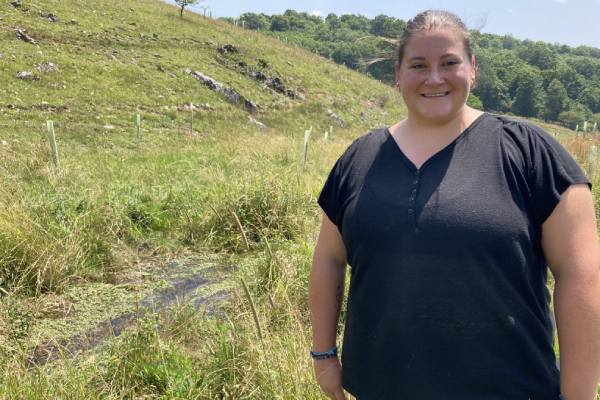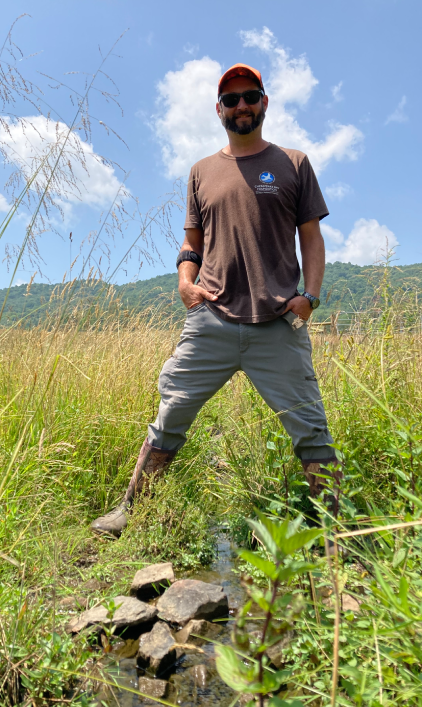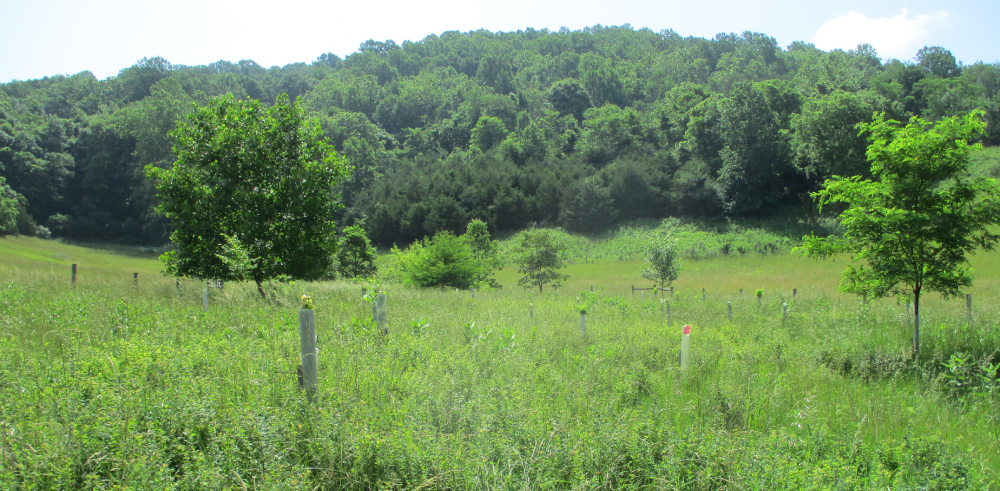Hello! My name is Lindsay Spotts, the new Upper James River Watershed Field Technician with the Chesapeake Bay Foundation (CBF). Within this position, I will work with landowners to design and organize planting of riparian buffers along on their properties along streams and tributaries that eventually flow into the James River. This work covers properties in Highland County, Bath County, Rockbridge County, and parts of Augusta County.
I started my career in the environmental education field, teaching students and the public about environmental challenges and getting them involved in hands-on experiences with nature. I have worked up and down the East Coast – starting in New Hampshire, down to Maryland along the Chesapeake Bay, through Virginia, up to Connecticut, and full circle back to Virginia with this position. Most of my background is aquatic – I have a Bachelor’s degree in Marine, Estuarine, and Freshwater Biology and a Master’s in Energy and Environmental Management with a concentration on coastal communities.

Lindsay Spotts, CBF Upper James River Watershed Field Technician at a project site in Highland County; start of the Jackson River

Alston Horn, CBF Restoration Specialist at project site in Highland County standing across Jackson River which eventually flows into the James River.
With my aquatic background, why am I passionate about planting trees? All aspects of land use are important to address when thinking about water quality and pollution within watersheds. Small streams all make their way to bigger rivers, for example, the Jackson River in Highland County flows into the James River, which then makes its way to the Chesapeake Bay. Watersheds are critical pieces of the Bay as a whole, so much so that if you view the streams and tributaries on a map, they look like tree branches reaching toward the Bay.
Within watersheds, non-point source pollution is one of the largest issues. Non-point source pollution (oil, animal waste, herbicides, fertilizer, road salt, etc.) has no clear origin as it usually enters the watershed through stormwater runoff into small streams.
This is why the James River Buffer Program work is such a critical part of protecting the Chesapeake Bay from nutrient runoff, pollution, and erosion. Landowners and farmers within the James River Watershed can take part in this turnkey program to work with CBF and James River Association (JRA) staff as well as other partner organizations to design, plant, and establish riparian forested buffers – with all costs being covered by the program. These riparian forested buffers then reduce nutrient runoff and pollution while improving water quality and providing necessary habitats for wildlife and aquatic life.
For landowners in the Upper James River Watershed looking for information on the James River Buffer Program or wanting to get started on installing a buffer on your property, please go to the James River Buffer Website to apply. To contact me directly, email LSpotts@cbf.org or call at 484-678-1071. I cannot wait to help you, help the Upper James, and save the Bay!



